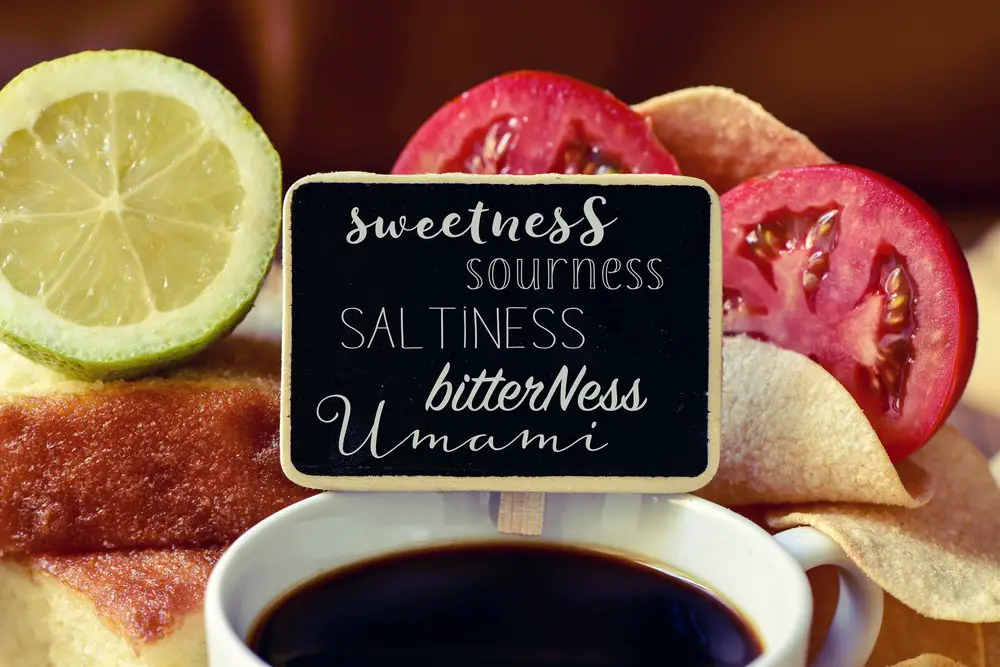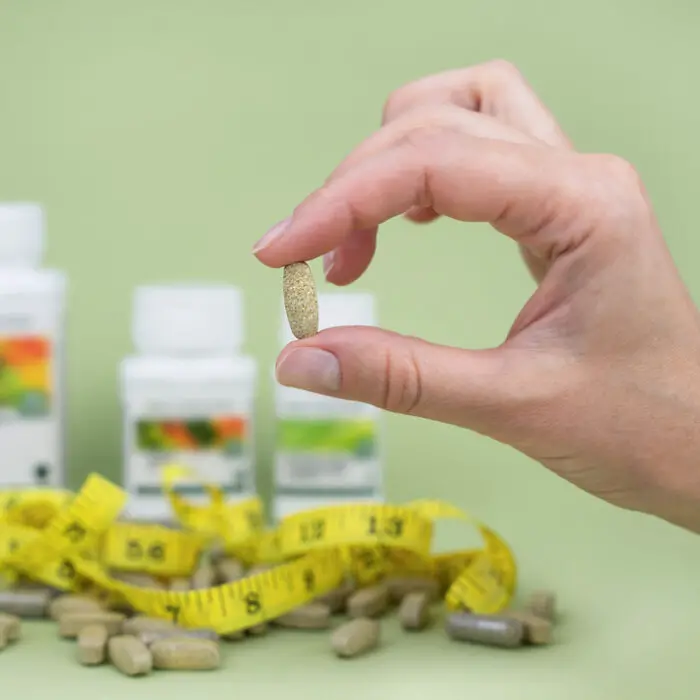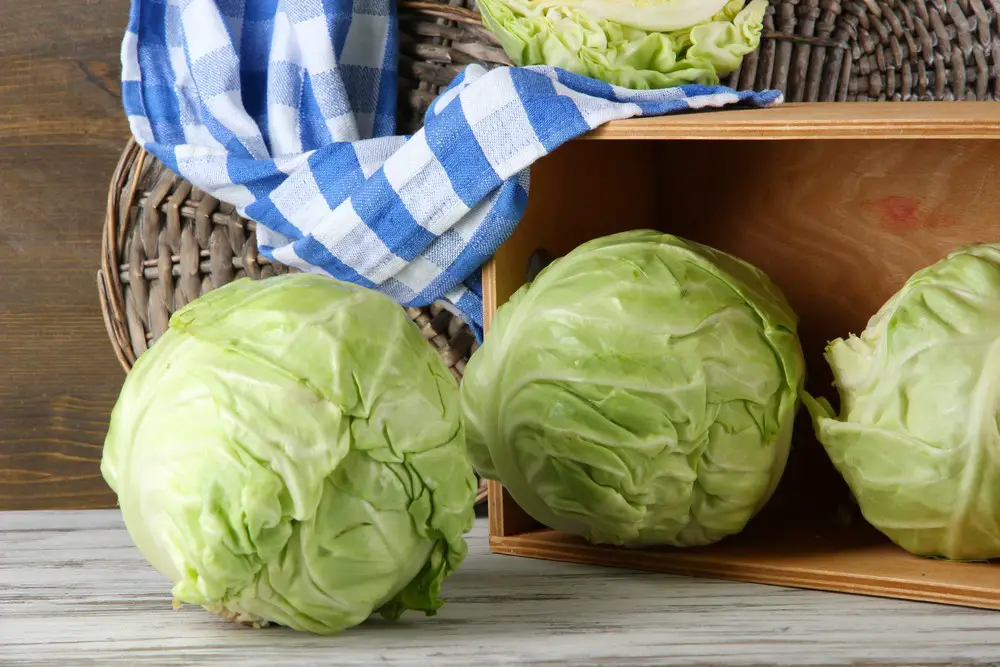Traditionally, the thick, dark sauce known as an oyster sauce used in several Asian cuisines includes oyster extract. However, the oyster juice doesn’t impart a fishy flavor to the sauce. Instead, it provides the earthy sweet, tangy flavor that adds umami to foods when used as a marinade, dipping sauce, or as a seasoning added to stir-fries.
For vegans, one of the most significant challenges is adding depth of flavor to foods without using animal proteins or products derived from animals. Vegan oyster sauce is one of the ingredients that can help you create more robust dishes, even when used alone.

How to Add Umami to Your Meals
The fifth flavor, umami, was discovered a little over a century ago by a Japanese biochemist, Kikunae Ikeda. The four other flavors are salty, sweet, sour, and bitter.
Ikeda wanted to identify the robust, savory quality of dashi, the kombu-flavored Japanese broth. In the process, he isolated a sodium salt of glutamic acid called monosodium glutamate.
Therefore, umami is the term he coined to describe the richer flavors created by glutamate, inosinate, and guanylate. Alone or in combination, these trigger our physiological needs by suggesting the presence of amino acids and proteins in our food.
Adding umami to food is not too difficult because it is present in several fresh ingredients, including meat and mushrooms. However, vegans don’t use products like meat, cheese, or bacon to add umami to their foods.
Vegan oyster sauce is one of a handful of umami-packed ingredients you can incorporate into your cuisine to add depths of flavor. Others include soy sauce, miso paste, and kombu.
Some fresh ingredients you can incorporate include tomatoes, onions, mushrooms, beets, asparagus, broccoli, and peas.
If your diet is plant-based, you will want to combine several umami-flavored ingredients to create an umami synergy. Additionally, the riper or more aged a product, the more flavor it imparts. Hence, ripe tomatoes are tastier than unripe ones, and dried mushrooms have a depth of flavor not found in fresh ones. Fermentation is a process that helps increases glutamates in soy sauce, miso paste, and beer.
Read more about plant-based sources of umami in this article by dietician Alexandra Caspero.
Finally, monosodium glutamate (MSG) might have a bad name as a food additive, but it’s used as a seasoning in most ready foods. The commercially made MSG contains the same substance found in umami-rich tomatoes, meaning its composition is the same. Sensitivity to MSG is rare.

What Foods Contain Oyster Sauce?
Several Asian dishes contain oyster sauce, including Cantonese, Thai, and Vietnamese. Therefore, restauranteurs use it to stir-fries and marinate meats and vegetables. Consequently, it’s difficult to determine if your food will have vegan elements in it when eating out or ordering in.
Vegan Oyster Sauce
Oyster sauce was an accidental discovery made by a Chinese food stall owner. He over-simmered a pot of oysters, ending up with a thick caramelized sauce which he tasted and liked. He started serving the sauce to his customers. It wasn’t long before the Lee Kum Kee Asian sauce hit the markets, helping to improve dishes everywhere.
Although the main ingredient in traditional oyster sauce is oysters, some companies produce a vegan version.
Mushrooms are the most common ingredient to impart an umami flavor to vegan oyster sauce. However, as a vegan, you need to carefully scrutinize the components of oyster sauce to ensure that it contains organic sugar. You can also look for a sugar-free vegan oyster sauce.
If you cannot find vegan oyster sauce in your area, you can replace it with teriyaki sauce, hoisin sauce, and coconut aminos.
How to make a vegan oyster sauce
It’s very easy to make a vegan oyster sauce to help you give umami flavor to your food, especially on a plant-based or vegan diet. Mushroom powder replaces the oyster extracts, yielding a sauce that matches shop-bought oyster sauce in flavor.
Ingredients:
- ½ cup soy sauce
- ¾ cup white or coconut sugar (Coconut sugar is ideal if you don’t want to use refined sugar and gives the sauce a darker color and subtle caramel flavor.)
- 2 teaspoons mushroom powder (If you can’t find some locally, make your own by grinding some dried shiitake mushrooms into a fine powder in a blender)
- 2 tablespoons cornstarch
- 1 teaspoon salt
- 1 cup water
Method:
- Whisk all the ingredients together in a saucepan to combine.
- Place over medium heat, regularly whisking the mixture to ensure the sugar has dissolved.
- Bring to a simmer and cook for about one minute or until the sauce has thickened. Remember that the sauce will thicken a bit more once cooled and chilled.
- Pour sauce into a clean jar, and once completely cooled, store in the refrigerator. It will keep for 2 weeks. You can also freeze the sauce for up to 3 months. First, freeze the vegan oyster sauce in silicon containers for ice cubes. Once frozen, store the cubes of vegan oyster sauce in freezer bags or an airtight freezer container in your freezer until needed.
- Add vegan oyster sauce to your noodle stir-fries, fried rice, or vegetable dishes. You can also use it to marinate tempeh and tofu. Finally, use it as a dipping sauce for spring rolls or sliced vegetables.
Note: See this recipe from A Nourishing Plate to make a gluten-free, vegan oyster sauce.
Cooking with Vegan Oyster Sauce
Oyster sauce has a powerful flavor that can easily overpower foods. Therefore, use it sparingly in cooked dishes.
Combine it with other ingredients in stir-fries, ensuring they coat all the ingredients. You can also pour it straight onto a dish as a garnish or for its combination of salty sweetness, often likened to barbecue and soy sauce.
Final Take
Whether you prefer to buy your vegan oyster sauce in a bottle or to make it at home, it’s a great way to add its umami flavor to meals. Always read the label to ensure it is vegan when buying store-bought oyster sauce. You can keep an unopened bottle in your pantry, but once opened, you must refrigerate it in its bottle or sealed container.
FAQs
What is the shelf life of vegan oyster sauce?
A vegan oyster sauce bottle can last up to two years when stored properly. Once opened, it should be refrigerated and used within two weeks.
How do you use vegan oyster sauce in cooking?
Vegan oyster sauce makes a great addition to stir-fries, fried rice, tempeh marinades, and dipping sauces. Use sparingly when adding to cooked dishes, as its flavor can easily overpower other ingredients. You can also drizzle some on your dish as a garnish or condiment
What is a good substitute for vegan oyster sauce?
If you cannot find vegan oyster sauce in your area, teriyaki sauce, hoisin sauce, and coconut aminos are all great substitutes. Alternatively, you can make your vegan oyster sauce with mushroom powder, soy sauce, sugar, cornstarch, salt, and water.
Can I freeze vegan oyster sauce?
Yes! You can freeze the vegan oyster sauce in silicon containers for ice cubes and store them in freezer bags or airtight containers in your freezer. It will keep for up to three months.
What sugar should I use when making homemade vegan oyster sauce?
Coconut sugar is ideal if you don’t want to use refined sugar, giving the sauce a darker color and subtle caramel flavor. Alternatively, white sugar can be used.
What are some of the health benefits of vegan oyster sauce?
Vegan oysters sauces are a great source of antioxidants, vitamins, and minerals. It is low in fat and calories and free from cholesterol. The mushrooms used to make vegan oyster sauce provide important micronutrients like selenium, copper, magnesium, potassium, zinc and more.







